For 60 years, an identity based on sustainable development. Interview with the Sustainability Manager of Italy’s leading wine-growing cooperative.
110km from Sicily and only 70km from Tunisia, a “Black Pearl” rises out of the Mediterranean: the island of Pantelleria - Yrnm for the Phoenicians, Cossyra for the Greeks, Romans and Carthaginians - is the peak of a volcano that rises around 2,000 metres from the bottom of the Strait of Sicily.
Geographically Italian, but African in its landscape, Pantelleria is a one-of-a-kind place where nature reigns supreme. Black lava stone cliffs overlooking the sea, vineyards of Moscato d'Alessandria (Zibibbo), natural geothermal springs and archeological remains testify to its ancient origins. The islanders have understood how to take care of and preserve this wild nature, which is rich in biodiversity and traditions, making it into a huge, open-air museum.
A destination that charms travellers from all over the world with unique rural landscapes and culinary delicacies. A place that has much to reveal, pass on and protect: a true gem, where nature and mankind have always lived in perfect harmony, and still do today.
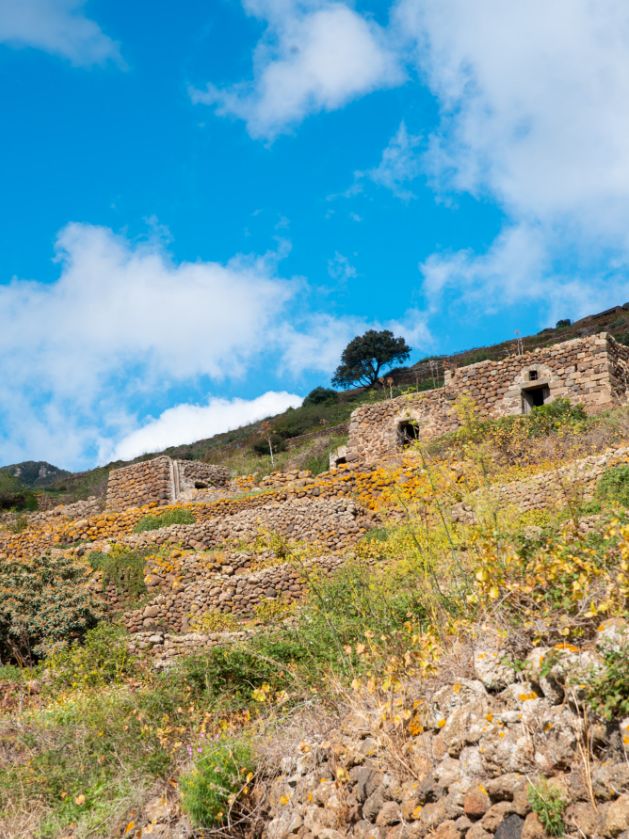
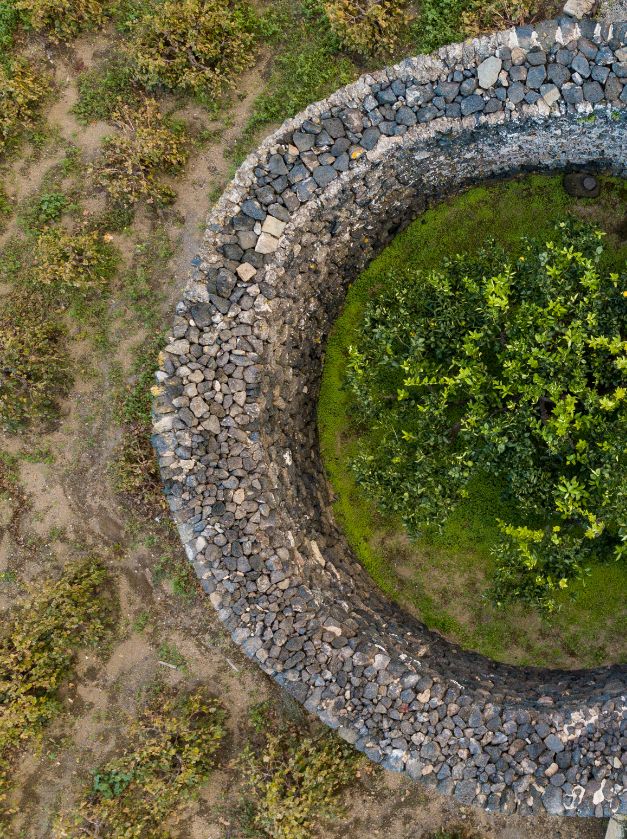
It is this very synergy between man and nature, which has always characterised the island, that has awarded it various recognitions from UNESCO: the “Traditional agricultural practice of cultivating head-trained bush vines” and “Art of dry stone walling” are the two agricultural and rural practices recognised in 2014 and 2018, respectively, as Intangible Cultural Heritage of Humanity; and, also in 2018, the “Landscape of dry stone walls on the Island of Pantelleria” was included in the National Register of Historical Rural Landscapes by MIPAAF (Ministry for Agricultural, Food and Forestry Policies).
Since 2016, 80% of the area of the island has been designated as the Pantelleria Island National Park. “Cultivating beauty” is the park's primary mission: relaunching agriculture, strengthening the partnership with other national parks, improving the circular economy, creating a park plan that involves young people from the island, participating in the European Charter for Sustainable Tourism and promoting biodiversity, in collaboration with research centres and universities. The Park Organisation's goal is to increase awareness of the island as a natural destination, promoting its most characteristic landscape features, distinctive UNESCO recognitions, and rural and production activities. In parallel, they aim to increase the flow of tourists in the low season, breaking free of the conception that the island is only a summer destination.
Innesti met with Sonia Anelli, Director of the Pantelleria Island National Park.
“It was 2016 when a fire, fuelled for days by strong sirocco winds, burned hundreds of hectares of forest on the island. Dismay was followed by a unanimous response from institutions, associations and citizens: in July of the same year, President Mattarella signed the Founding Agreement of the Pantelleria Island National Park, and shortly afterwards, the Parks for Kyoto Commission launched a fundraising campaign for reforestation.
The most recent National Park created in Italy, and the first in Sicily, it is exclusively on land; after all, the rough water churned up by currents and the rugged coastline make the island difficult to access by sea - however, including the marine area is part of the Park Project's growth plan, considering the growing attention to issues related to the protection of the seas and oceans.
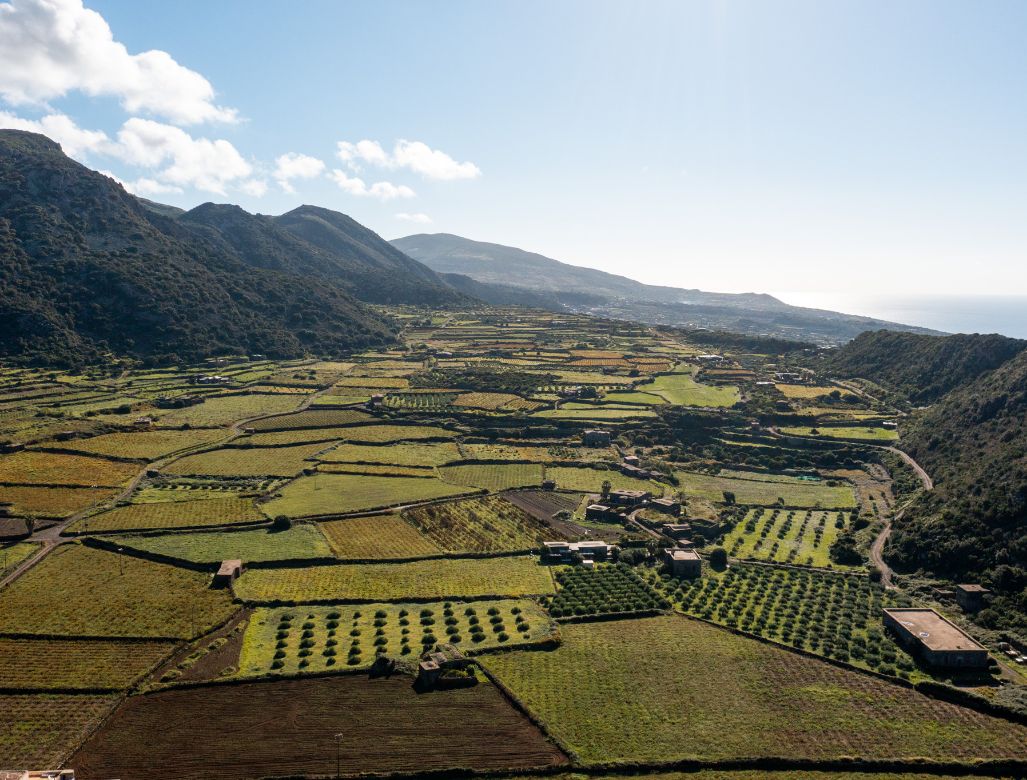
The Park was created to protect not only the island's nature and territory, but also the special synergy between mankind and nature that this island is so exceptional for: protecting and promoting this harmony and all its potential is at the centre of the discussion. Head-trained bush vines are one of the special balances created over time by this alliance, cultivated in the same way since the Phoenician times.
When someone asks me if I represent nature or the environment, I always say that I represent both. We are not a wild park, where there are no inhabitants: the relationship between environment and civilisation is very close, because we are an island, a borderland, where some species are endemic, and others the result of the meeting of different continents. The role of the Park is to preserve this unique authenticity and reduce the loss of biodiversity to a minimum, as it is the most effective guardian of local resilience.
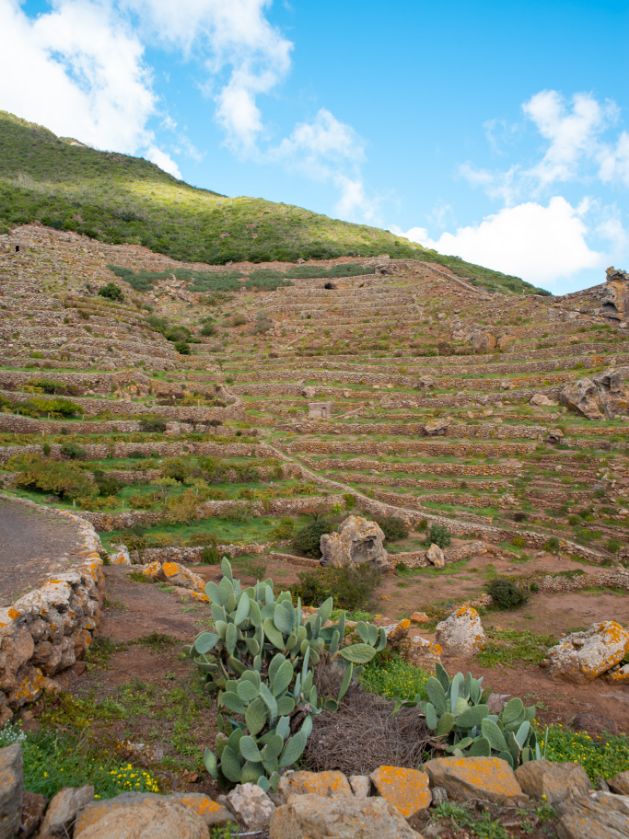
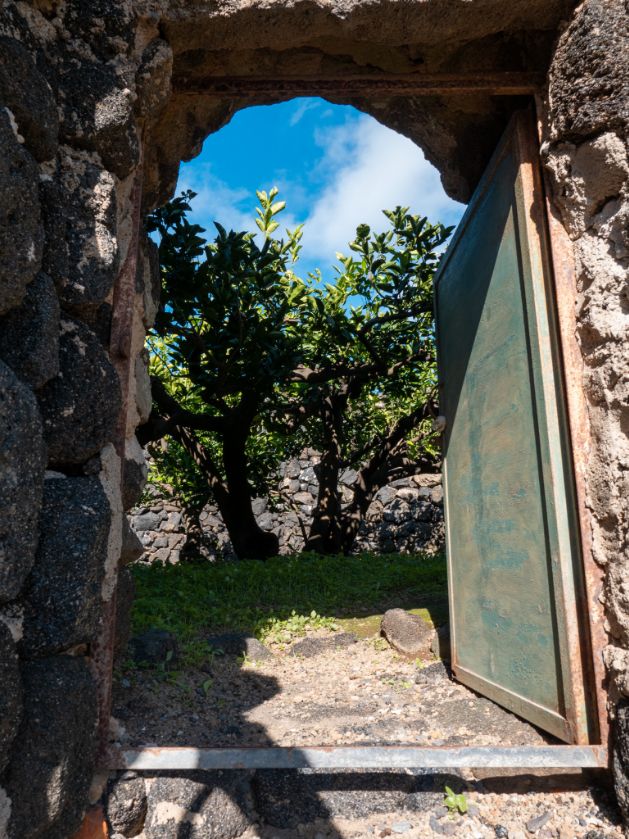
We also have the social and economic obligation to support and maintain traditional cultivations and heroic agriculture, not from the perspective of conservation, but instead a forward-thinking blend of technology, innovation and tradition that can facilitate the work of farmers. We want to be the bearers of a systemic co-evolution. In other words, evolution as regeneration: regenerating agriculture by bringing together techniques and wisdom from the past, and the innovation that modern technology offers us.
The National Park has submitted the “RENEWDAMMUSI“ Plan - Renewable and energy efficient solutions for local dammusi dwellings- for the NESOI grant, presenting a project that provides for the possibility to make the traditional buildings in Pantellerian architecture - “dammusi” - into nZEBs - nearly Zero Energy Buildings, defined as a “building in which the energy requirements are very low or close to zero, and are covered in large part by energy from renewable sources, produced on site”. Thanks to the NESOI funding, along with the Turin Polytechnic, which prepared the project, the Park Organisation has an experimental model for a nearly zero energy Dammuso (nZEB), which combines environmentally sustainable and landscape-compatible solutions; this experimental model offers an example for professionals and private citizens who want to make their Dammusi into nearly zero energy buildings (nZEB).
We have also received funding to make the structure of buildings more efficient, including the Nature Museum, through the purchase of electric cars, scooters and bicycles for sustainable mobility around the island, and the restoration of footpaths and old mule tracks. We have achieved recognition from CAI (Italian Alpine Club) for the footpaths, and have been focusing on the development of environmental hiking guides to promote the different routes. In 2022, we produced the Park's first catalogue of hiking routes.
We are working to preserve and promote the native species of flora and fauna, and promote local animal breeds, such as the Pantesco donkey, a unique, beautiful breed with a distinctive ambling walk; in parallel, we are also involved in the containment and prevention of the spread of alien species. For example, Pennisetum, a grass that produces white plumes, is spreading rapidly and displacing the Mediterranean scrub, while Ailanthus (Tree of heaven) and Carpobrotus (Hottentot-fig) are overtaking other native species.
We have recently received an ECST award (European Charter for Sustainable Tourism in Protected Areas) from the Europarc Federation, and the next step in this direction will be the involvement of tour operators in sustainable projects and actions. We will also be working towards an ISO 14000 certification.
We are also supporting the work of Selinunte Archeological Park, Cave di Cusa and Pantelleria, which is working to promote the archeological parts of the island. Finally, we are also working on a campaign against littering, in collaboration with the Carabinieri Forestry Corps.
And then there is the population. The residents.
The Pantellerians are receiving our work with mixed feelings. We encounter both curiosity and suspicion, and those who find a way to actively collaborate. This is why we are promoting competitions, hiring people and collaborating with local farmers, consortia and professionals. Managing to earn their trust is part of this journey of co-evolution, because it is only if every step is assimilated in complete synergy by the two historical elements - inhabitants and nature - that we can hope to succeed with the project to regenerate the island, the Park and its population.”
For 60 years, an identity based on sustainable development. Interview with the Sustainability Manager of Italy’s leading wine-growing cooperative.
A circular economy that’s reforesting the Dolomites: from reclaimed wood come natural sound amplifiers - and a new tree.
